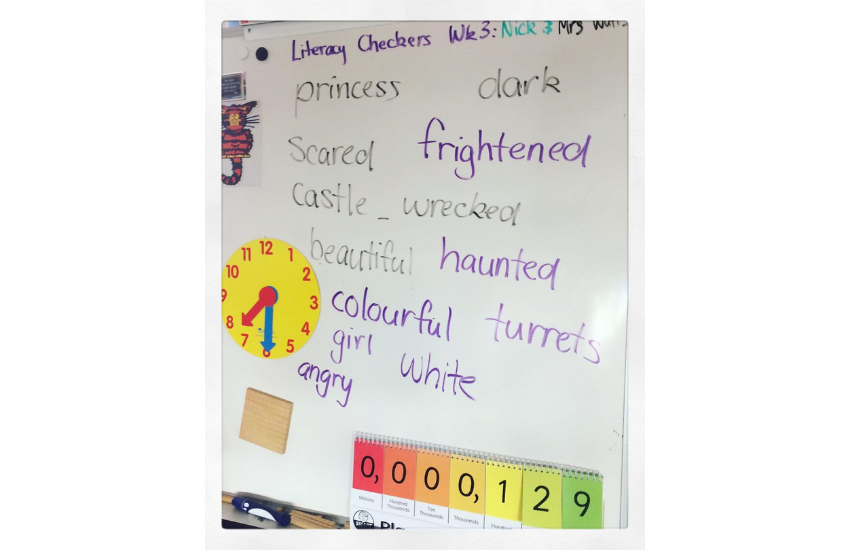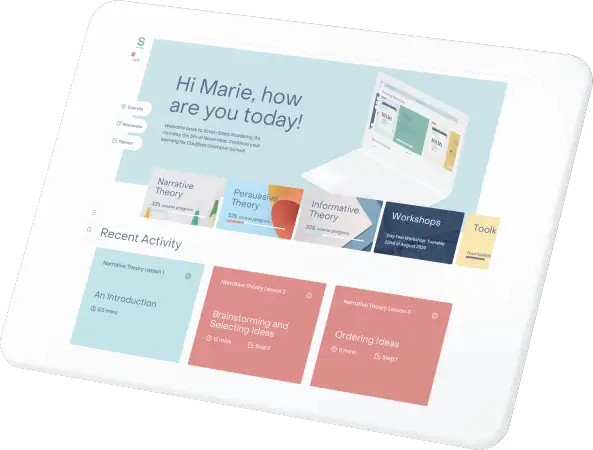Repetition makes muscle memory. Which is why daily writing is so important – the more your students practise brainstorming, planning and writing, the ‘stronger’ they’ll become.
But we all know we can’t ask students to write a full story every day. It’s just too much! Instead, focus on one skill at a time and introducing it in a simple and interactive way.
So how do you get students writing daily while maintaining engagement and improvement?
By getting your hands dirty, being involved in the writing process and with fast-paced daily writing activities!
Lisa Moore, a Year 1/2 teacher from the Hunter Valley (NSW), uses fast-paced daily writing activities to engage with her students and improve their writing. The end results have been phenomenal.
Her kids’ writing has improved out of sight! They are using complex sentence structures and experimenting with vocabulary.
Best of all, her students are all writing − even the ones who hated writing! Isn’t that incredible?
The daily writing activity
Here’s what Lisa does to engage her writers.
1. Write a Fizzling Start
Using a picture writing prompt as a stimulus, Lisa writes a sentence first – a start that fizzles.
‘The Princess was running and it was dark.’
This is of course extremely boring, which the kids take much delight in telling her.
2. Demonstrate some Sizzling Starts
Lisa then shows examples of interesting sentences. Students love seeing what great writing looks like and what they can aspire towards.
‘A swarm of dark, winging creatures fluttered like ash around the tall turrets.’
‘Dashing across the stone courtyard, the swishing of a torn ballgown was the only sound to break the silence.’
Want more writing examples? Download our free collection here.
3. Ready, Set, Go!
After showing her students a number of dynamic openings, Lisa takes her sentences away, showing only the picture writing prompt. She puts the timer on and gives them five minutes to write their own Sizzling Start.
4. Ideas instead of spelling (at this stage)
She emphasises to her class that at this phase of the writing process, she’s not worried about spelling. Lisa just wants ideas.
To help inspire her students’ creative flow she puts some tricky or interesting words up on the whiteboard but encourages her class to just have a go.
Spelling and punctuation can be a huge obstacle for young and reluctant writers. Removing some of the obstacles and worries these students face can free them to be creative and put pencil to paper.

[Related resource]: Bec from South Australia also found great success by removing the pressure of making mistakes – read her insight.
5. Heat things up
Reduce the time from five minutes to four or even down to 60 seconds for each Sizzling Start.
How do I repeat this every day?
1. Change the picture writing prompt
Today it might be a princess, tomorrow can be a jumping kangaroo and a birthday party the following day. You can even ask your students to bring in their own images!
Check out our free writing prompt collections: Narrative | Persuasive | Informative
2. Change the text type
Add a question and have your class write a persuasive Sizzling Start. Or accompany the picture with some facts and ask them for an informative Sizzling Start.
Learn how to have fun with factual writing.
3. Change the Step
Ask your students to write dialogue, a tension scene or an exciting Ending with Impact.
For a comprehensive list of Action Activities for each text type, become a Seven Steps member. There are over 650 classroom resources to transform your students’ writing, including theory videos to help you seamlessly implement the Seven Steps.
Expose them to great writing, set high expectations and show them a love and passion for writing, and the kids will follow suit!
– Lisa Moore
Follow Lisa’s teaching journey on Instagram and connect with even more Seven Steps teachers by following us on Instagram, Facebook or Twitter.
Do you have your own writing activity or story that you would like to share? Get in contact through [email protected]

Sizzling Starts is easy to teach, fun to learn and guaranteed to have them cheering for more!

